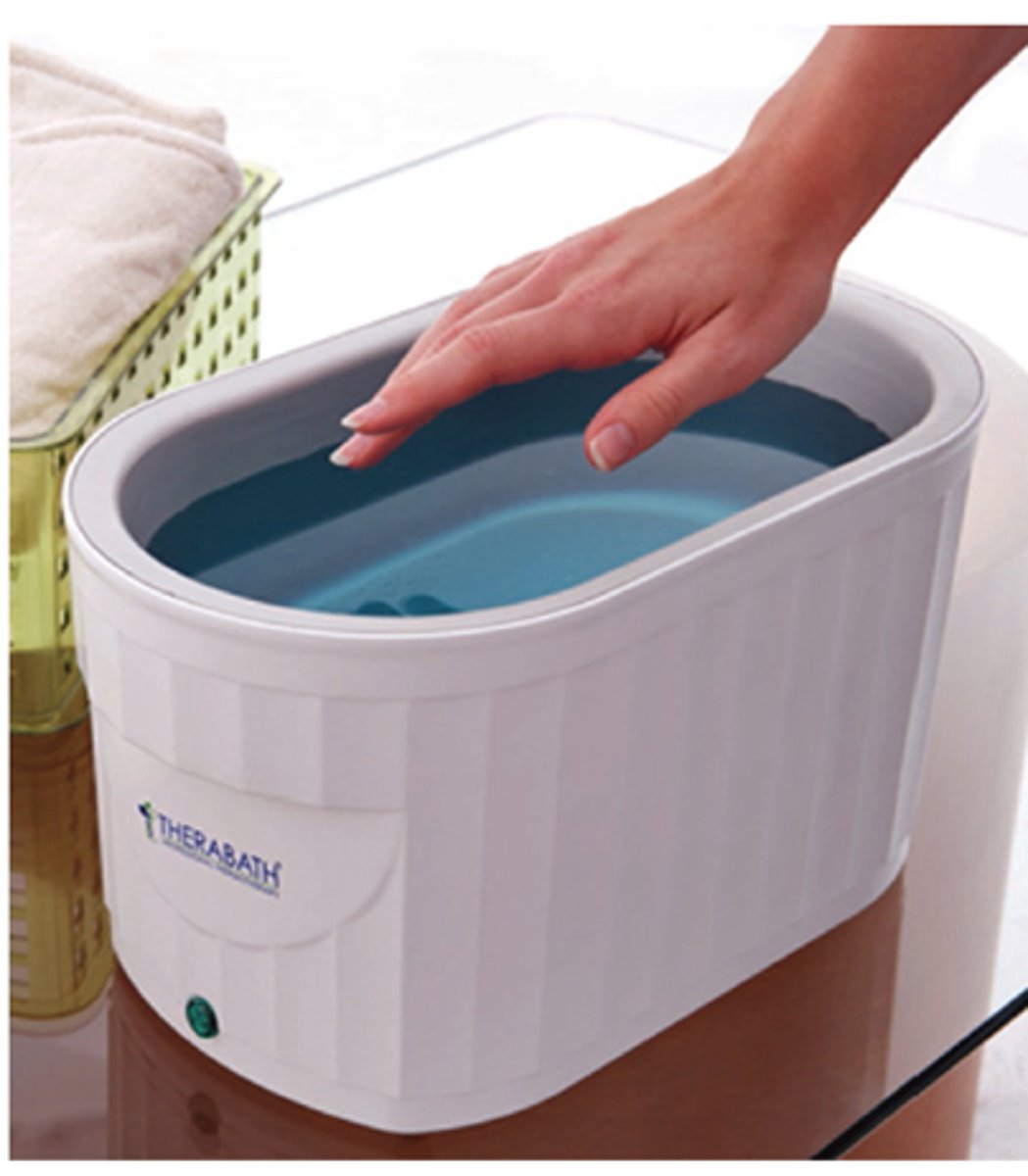unit 14 - treatment quiz 1: crutches, therapeutic modalities: cryotherapy & thermotherapy
1/35
There's no tags or description
Looks like no tags are added yet.
Name | Mastery | Learn | Test | Matching | Spaced |
|---|
No study sessions yet.
36 Terms
placing the tip 6 inches from the outer margin of the shoe, 2 inches in front
how is crutch length determined by?
1 inch (2-3 fingers)
how low should the underarm crutch base be positioned under the axilla?
30
the hand brace should be adjusted so that it is even with the athlete's hand when the elbow is flexed at an approximately ________ degree angle.
crutches
if an athlete is suffering a lower extremity injury and weightbearing is limited, what treatment should be given?
proper fit and providing clear instructions on use
what is the evaluator responsible for when giving a patient crutches?
inspect the crutches for any defects
what should you do before you give a patient crutches?
rubber bottom wearing away; plastic armpit rest cracks
what are the two common defects in crutches?
1. Athlete stands on uninjured leg with no or partial weight on injured leg
2. Advance both crutches and the injured foot/leg
3. Move the uninjured weight-bearing foot/leg forward beyond the crutches.
what are the steps to walking with crutches on a level surface?
uninjured support leg (up with the good)
what should you move first when you are going up the stairs with crutches?
the crutches and the injured leg (down with the bad)
what should you move first when you are going down the stairs with crutches?
1. nonweightbearing
2. touchdown weightbearing
3. partial weight bearing
4. full weight bearing
what is the crutch walking progression?
uninjured side
which side should the athlete hold the single crutch when they have reached the partial weight bearing stage?
therapeutic modalities
various methods and agents used to manipulate circulation in the treatment of muscles and joints
cryotherapy, thermotherapy, electrical modalities, mechanical modalities, pharmacologic agents
what are the 5 types of therapeutic modalities?
cryotherapy
uses cold to reduce the temperature of body tissue in order to cause blood vessels to constrict (vasoconstriction), decreasing bloodflow to the area
thermotherapy
uses heat to increase temperature of a body region in order to cause blood vessels to dilate (vasodilation), increasing blood flow to those tissues
heat, thermotherapy
which modality should you NOT use after an acute injury?
ice packs, ice massage, ice water immersion, whirlpool bath, vapo-coolant spray
what are the 5 types of cryotherapy they talked about in the reading?
- cold sensation lasting 0-3 minutes
- mild burning and aching for 2-7 minutes
- relative numbness lasting 5-12 minutes
what will a person experience when cryotherapy is used at a therapeutic depth?
20-30
therapeutic effects are achieved when the cold is applied for ________ minutes
the body will start responding to the cold, increasing bloodflow and reversing the effects.
why shouldn't cryotherapy last for more than 30 minutes?
ice packs
most common form of cryotherapy for acute injuries and first-degree burns
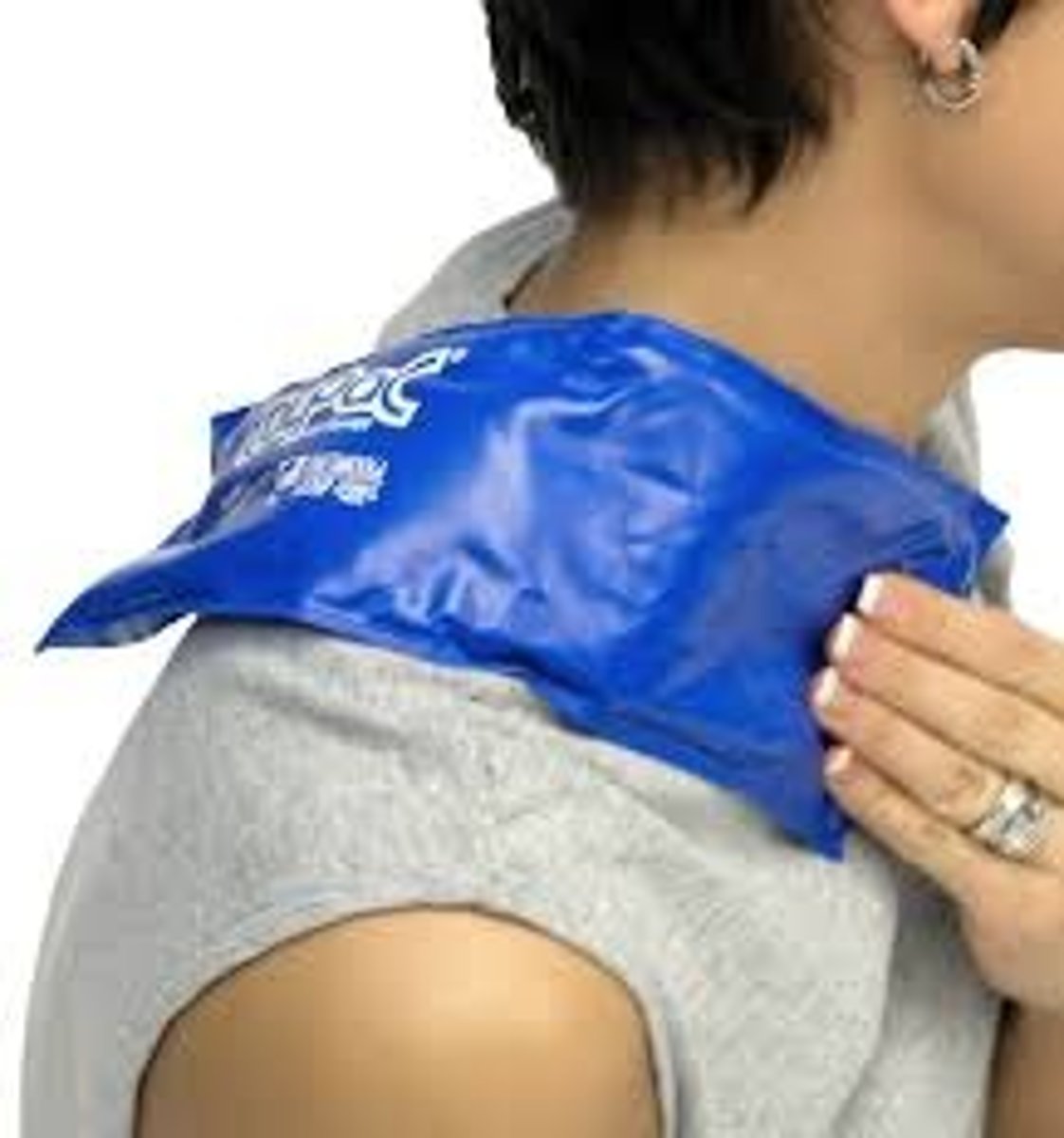
ice massage
commonly used for chronic tendonitis, bursitis, and muscle strains; only form of cryotherapy where ice is directly applied to the skin
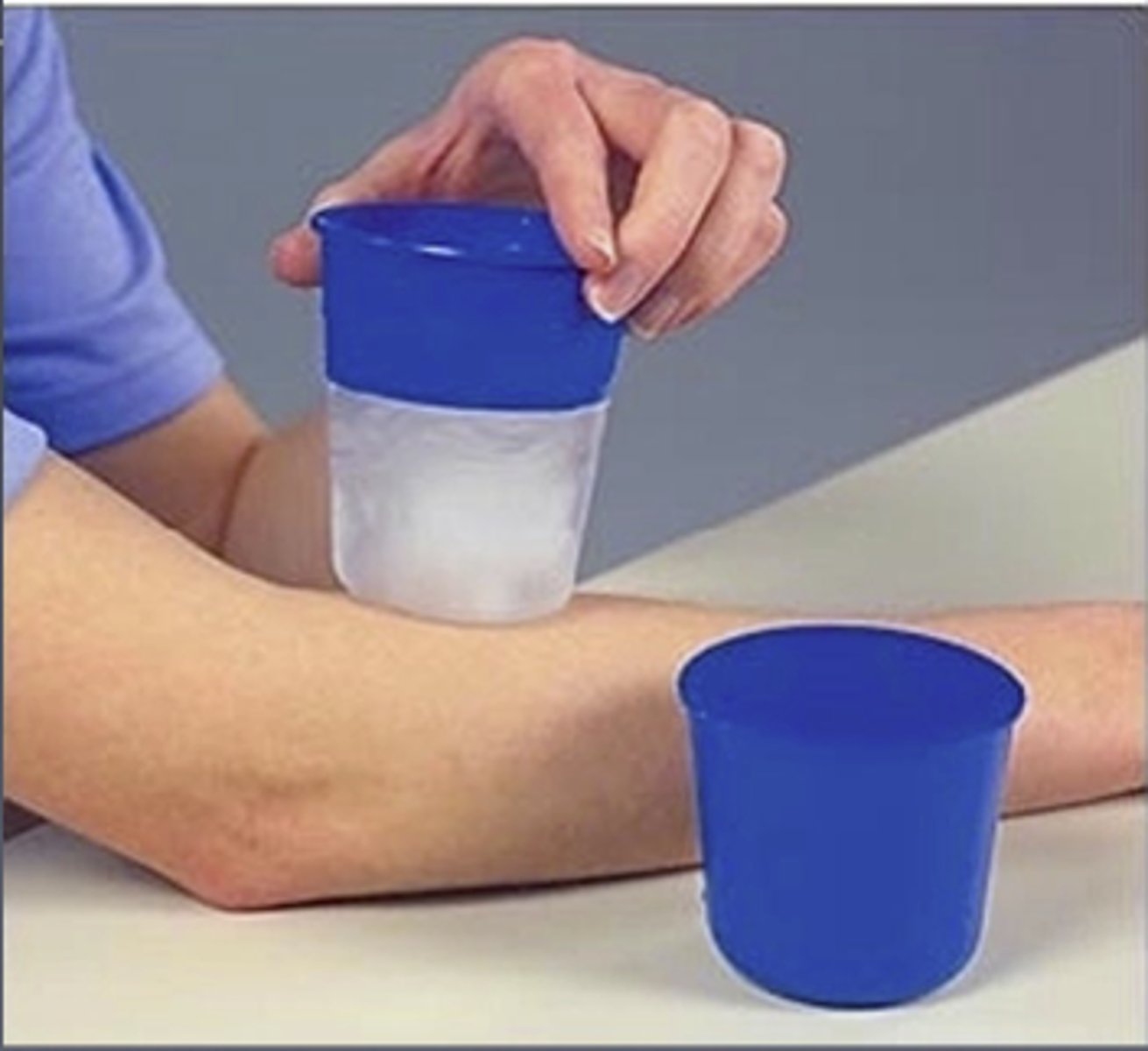
vapocoolant sprays
have the ability to reduce muscle spasms and increase ROM; used for lumbar strains, cervical strains, hamstring injuries, and aids in stretching; effects are superficial and temporary
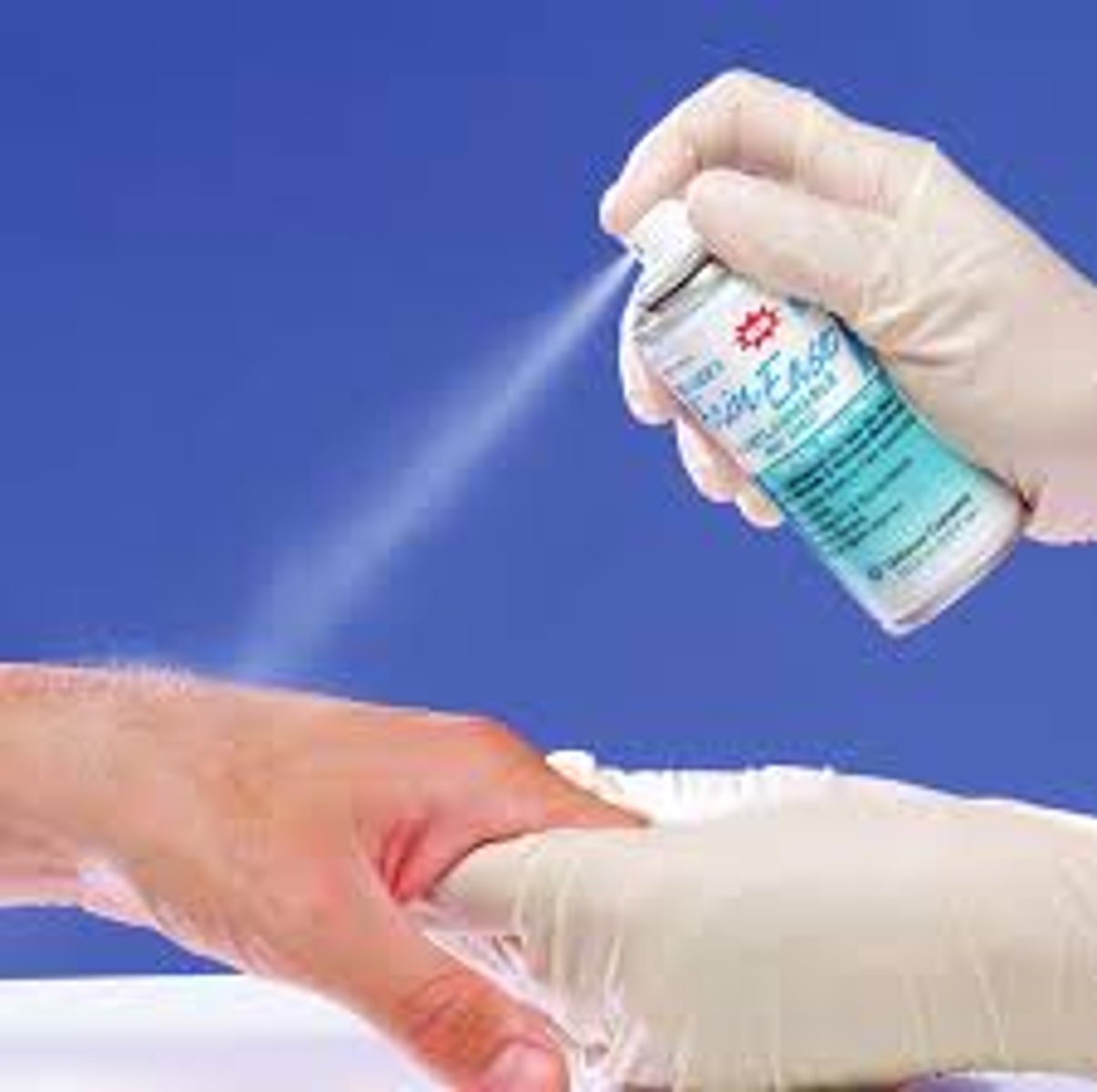
ice water immersion
small bucket or whirlpool bath filled with ice and water; best suited for elbow, hand, and feet injuries
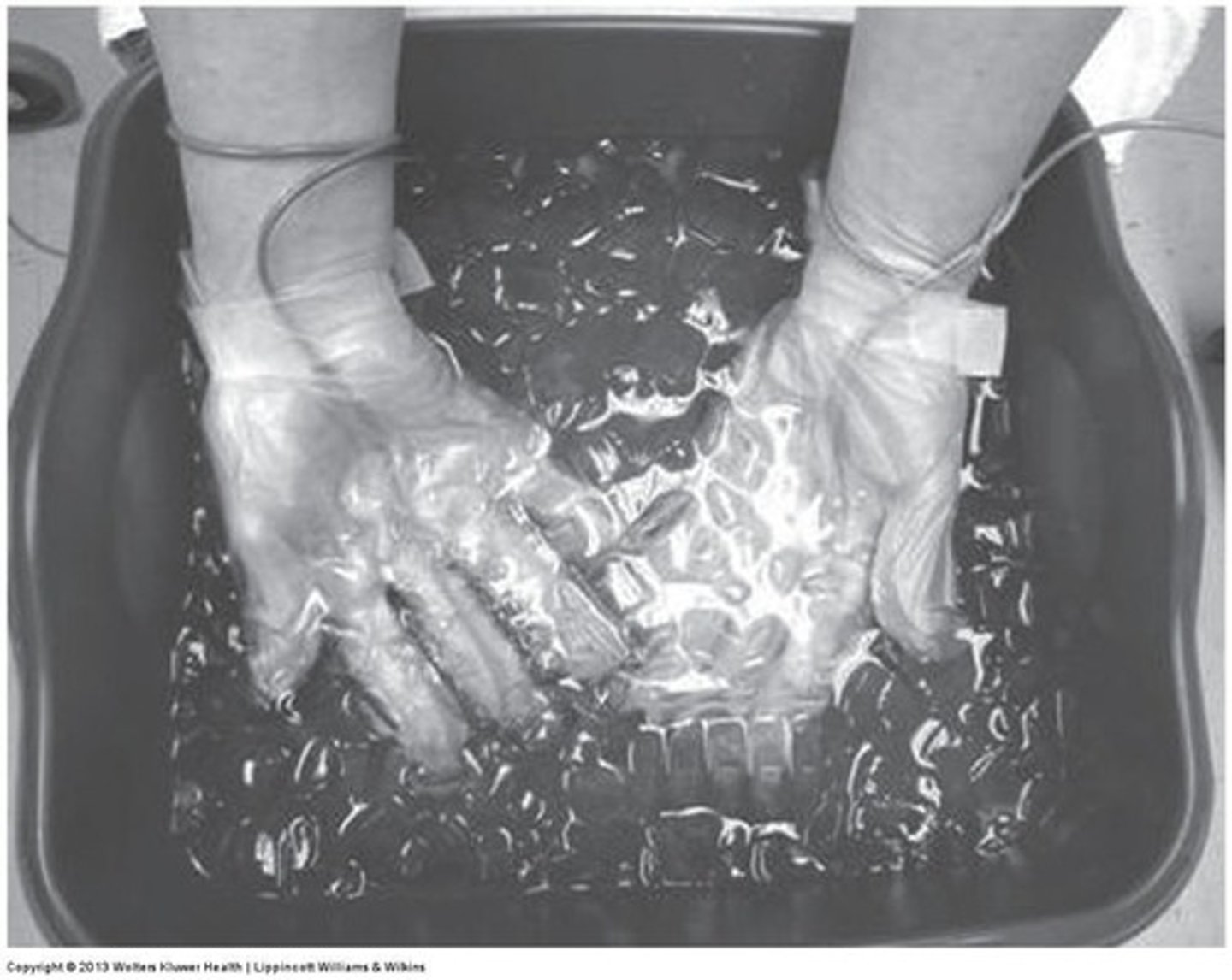
whirlpool baths
heated or cooled water with a massaging action
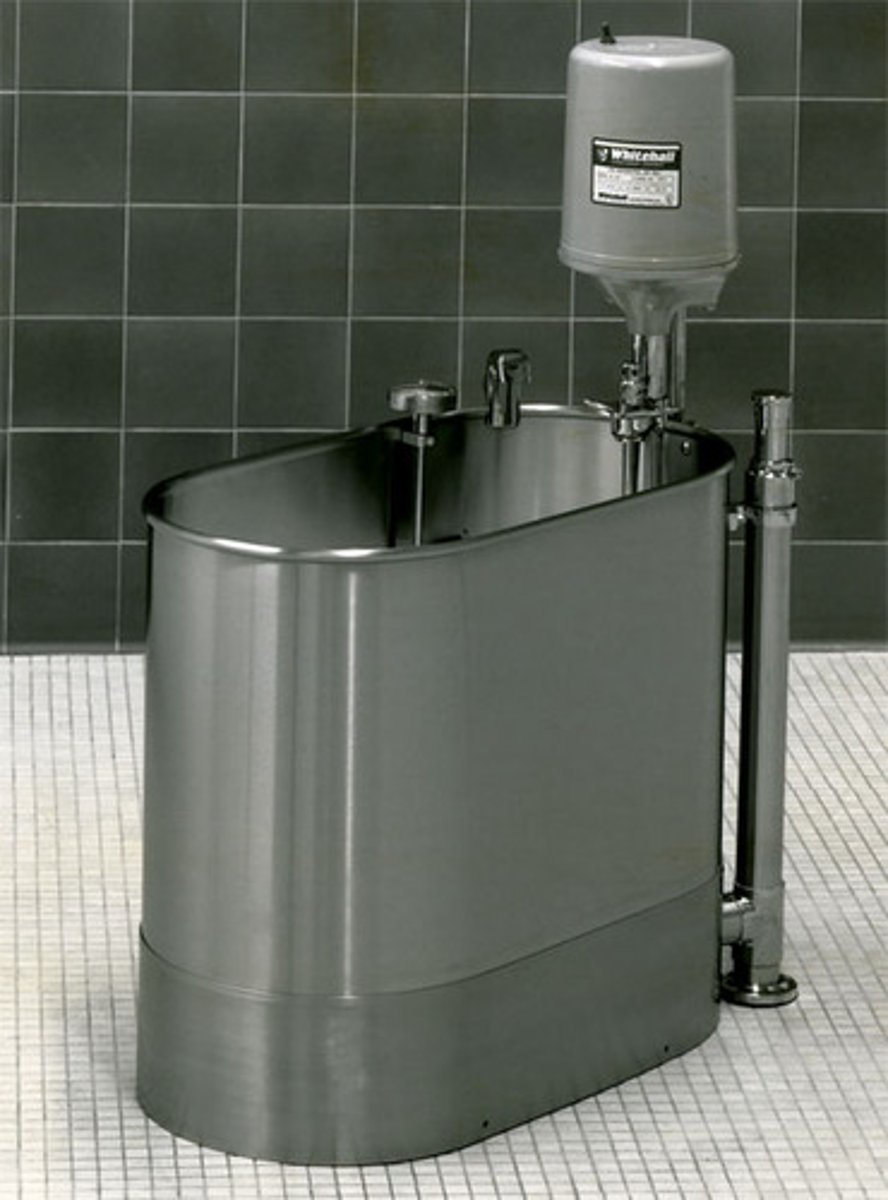
hot whirlpool baths
can increase elasticity of muscles, decrease pain and muscle spasms
cold whirpool baths
reduce edema?? muscle spasms, and pain
provides comfort by increasing circulation and decreasing localized pain, edema, muscle spasms, and joint stiffness, as well as promotes collagen elasticity
what does heat therapy do?
moist heat packs, fluidotherapy, warm whirlpool baths, paraffin baths
what are the types of thermotherapy presented in the reading?
2 cm
superficial heating methods provide heat penetration to a depth of approximately ________.
5 cm
deep heating treatments can penetrate to a depth of approximately ________.
areas of lost sensation, area right after acute injury, eyes, open wounds, burns, areas of malignancy, patients with history of diabetes or reduced thermal regulation
where are some areas to avoid thermotherapy?
moist heat packs
also known as hydrocollator packs; used for subacute to chronic pain to relax the muscle area and reduction in the muscle spasm/pain cycle; deep tissues do not receive this treatment
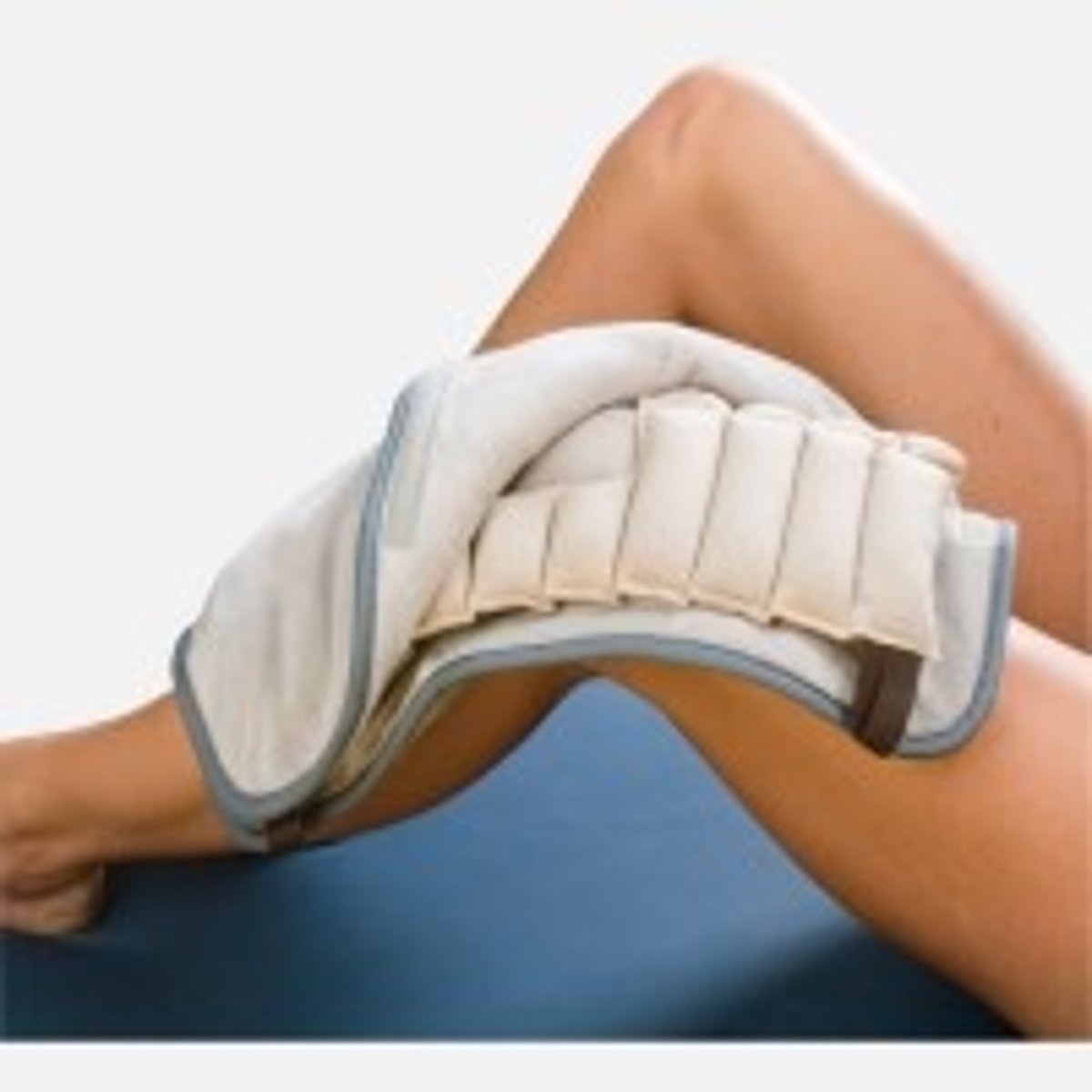
fluidotherapy
also known as "dry whirlpool"
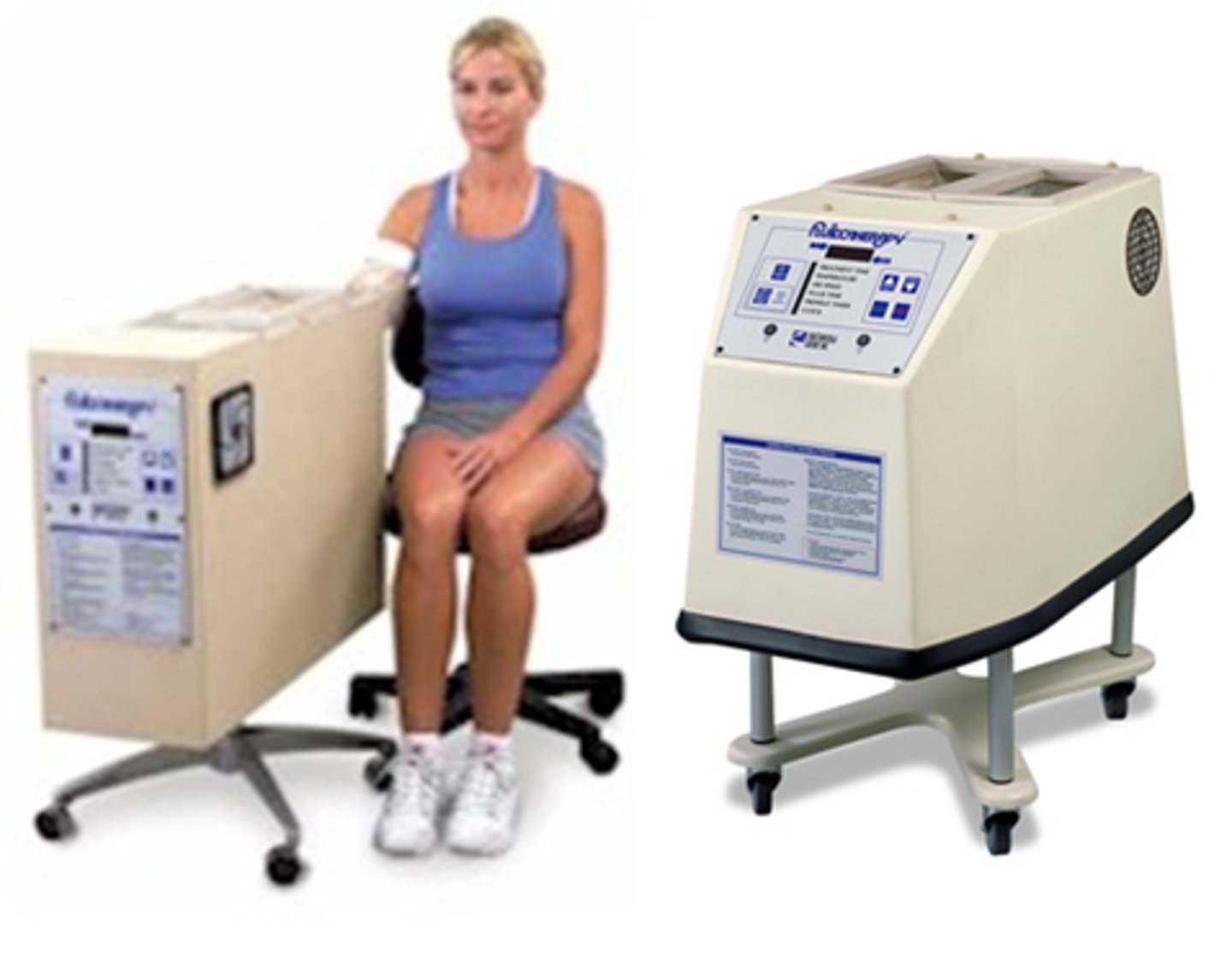
paraffin bath
melted wax used for thermotherapy treatment; used to treat chronic inflammation injuries such as arthritis, bursitis, tendonitis, or epicondylitis; paraffin remains on the skin for a few minutes to allow it to reach deep tissue level.
